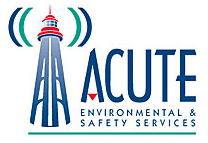
Oftentimes in workplaces health and safety get overlooked. For employers in Ontario looking to ensure their employees’ safety training, there are a lot of bases to cover. If you’re feeling overwhelmed or if you are not sure where to begin, look no further. Are you a new health and safety manager or part of a joint health and safety committee and wondering where to start? Check out the basics for your first 90 days here in this article. Still needing additional assistance? With over 100 years of combined staff experience, ACUTE provides comprehensive health and safety training, on-site safety services, consulting services, and has now created a check-list to provide employers in Ontario with an understanding of the training requirements for their employees under the Occupational Health and Safety Act. Contact the experienced professionals at ACUTE today for all of your health and safety training needs.
Get training that saves
Health And Safety Management Plan Template

Start With The Basics
The Occupational Health and Safety Act (OHSA) is Ontario’s cornerstone legislation for workplace health and safety. The main purpose of the Act is to protect workers from health and safety hazards on the job. It outlines duties for all workers, managers, and employers, as well as rights for workers. The OHSA establishes procedures for dealing with workplace hazards and provides for enforcement of the law where compliance is lacking.
Manager’s Role And A Company’s Safety Requirements
Health and safety authorities determine and enforce labour and safety regulations. Understanding who’s who in the industry will be helpful when a manager in a workplace needs to look up info or prepare an incident report. The main role of a safety manager in a workplace is to understand the regulations, create plans to meet those regulations, manage incidents, and report issues. In the exceptional cases, a safety manager will also need to handle audits by outside safety authorities. Knowing what steps to take and the specific role a workplace safety manager plays can help you understand the measures your company will be held responsible for and also enables you to better respond to government or watchdog inquiries should the need arise.

The OHSA requires most workplaces with 20 or more workers to have at least one worker and one management person serve as certified members of a workplace Joint Health and Safety Committee (JHSC). This certification involves training in health and safety law and the identification, assessment, and control of hazards.
Standards for this training are set by the Ministry of Labour, Immigration, Training and Skills Development and the ministry also certifies JHSC members who complete approved training programs. Certification training is available through ACUTE. Contact the professionals at ACUTE today to book your training.
Step 1: Understand Your Regulations
The Ministry’s goal is for all workplaces to achieve self-compliance with the OHSA and regulations. The first step for a new safety manager is being familiar with what regulations apply to your sector, work, or specific hazard. Regulations made under OHSA may be sector, work, or hazard-specific.
Sector-Specific Regulations:
• Health Care and Residential Facilities

Work-Specific Regulations:
• Offshore Oil and Gas Production
Hazard-Specific Regulations:
• Designated Substances Regulation
• Designated Substance – Asbestos on Construction Projects and in Buildings and Repair Operations
• Regulation respecting the Control of Exposure to Biological or Chemical Agents
• Regulation respecting X-Ray Safety
Step 2: Display Required Postings
Displaying the required postings is an easy way you can jump-start your duties as a health and safety manager. It is your responsibility to have these documents posted in a visible public area. Displaying the required postings should be top on your list for the first 90 days. Required postings include
• Occupational Health and Safety Policy
• Workplace Violence and Harassment Policy
• OHSA and Regulations
• “Health & Safety at Work: Prevention Starts Here”
• Guide to the OHSA
• Guide to the JHSC
• Name of HSR or JHSC members
• MSDS information/binders (Sample)
• “In Case of Injury” Poster
• First Aid Certificates
• Ministry of Labour, Immigration, Training and Skills Development Orders (Requirements)
• Employment Standards Poster
• Emergency Services & Numbers
Please note that depending on your workplace, you may have further training/and or posting requirements. Contact ACUTE for further information and to arrange for training for your staff.
Step 3: Awareness
This is the third step in building positive occupational health and safety practices in the first 90 days as health and safety manager. Without awareness workers, supervisors, and employers are not able to act effectively to ensure workers are healthy and safe. We have to make more people aware of their occupational health and safety rights and responsibilities – especially those most at risk and their employers. To raise awareness, you need to work with new partners, develop more consistent messages, and use these messages across the system. This could mean hosting a weekly meeting, sending out weekly safety e-mails, or even hosting a one-day course – depending on your industry and what is required.
Step 4: Form A Joint Health And Safety Committee
A Joint Health and Safety Committee (JHSC) is a forum for the cooperative involvement of employees representing both labour and management. These committees are required for organizations with over 20 employees in Ontario. Workplaces with more than five but less than 20 workers are not usually required to have a JHSC. Instead, workers must select a person from among themselves to be a health and safety representative. A JHSC brings together labour’s in-depth, practical knowledge of specific jobs and management’s larger overview of job relationships and general company policies and procedures. The Ministry of Labour, Immigration, Training and Skills Development has published A Guide for Joint Health and Safety Committees and Representatives in the Workplace. The main way that workers can participate in workplace health and safety is through exercising their rights and duties in a responsible manner and by supporting their Joint Health and Safety Committee (JHSC).

Examples of Roles – Employees, Management, and Safety Managers
Examples of worker responsibilities include:
• Using personal protection and safety equipment as required by the employer
• Following safe work procedures
• Knowing and complying with all regulations
• Reporting any injury or illness immediately
• Reporting unsafe acts and unsafe conditions
• Participating in joint health and safety committees or as the health and safety representative

Examples of management responsibilities include:
• Providing a safe and healthy workplace
• Establishing and maintaining a health and safety program
• Ensuring workers are trained or certified as required
• Reporting accidents/incidents and cases of occupational disease to the appropriate authorities
• Providing medical and first aid facilities
• Ensuring personal protective equipment is available
• Providing workers with health and safety information
• Supporting supervisors in their health and safety activities
• Evaluating health and safety performance of supervisors

Examples of safety coordinators’ responsibilities include:
• Advising all employees on health and safety matters
• Coordinating interdepartmental health and safety activities
• Collecting and analyzing health and safety statistics
• Providing health and safety training
• Conducting research on special problems
• Attending joint health and safety committee meetings as a resource person
ACUTE: Trusted Advisor To Safety Managers
ACUTE’s experienced team members have been serving safety professionals for over 20 years. They’ve done the work and become safety advisors. Trust ACUTE for hands-on, practical training and keep your employees safe in the workplace. ACUTE is dedicated to workplace safety and understands the importance of course and training provider approval. Why get workplace safety training with ACUTE? Here are just some of the benefits of working with ACUTE.

- Open Door Instructor-Student Partnership – ACUTE’s training services emphasize client participation. Staff foster relationships with clients and serve as a touchstone for advice anytime moving forward.
- Serving Your Team and Industry – With a vast array of clients in manufacturing, construction, health, academic, and government sectors, ACUTE brings the best safety practices from across the spectrum to your workplace.
- 100 Years Combined Experience – ACUTE provides comprehensive health and safety training, on-site safety services, and consulting services. With over 100 years of combined experience, our company staff offer more than theoretical or abstract ideas. ACUTE offers solutions.
- Track Record of Success – ACUTE is rated 4.9/5 stars on Google reviews, demonstrating a commitment to our clients, quality, and passion for training.
“We have relied on ACUTE for years to train our staff and
keep them safe on the job site.”
– Bob, Millwrighting Company – Read More Testimonials Here!
Click here to see what training courses we have at ACUTE or contact us today for quality training in your workplace or on-site at ACUTE’s proven training facilities!
ACUTE is located in Waterloo, Ontario, and services customers from cities such as Toronto, Mississauga, Brampton, Hamilton, Milton, Kitchener, London, Guelph, and others across Ontario.





